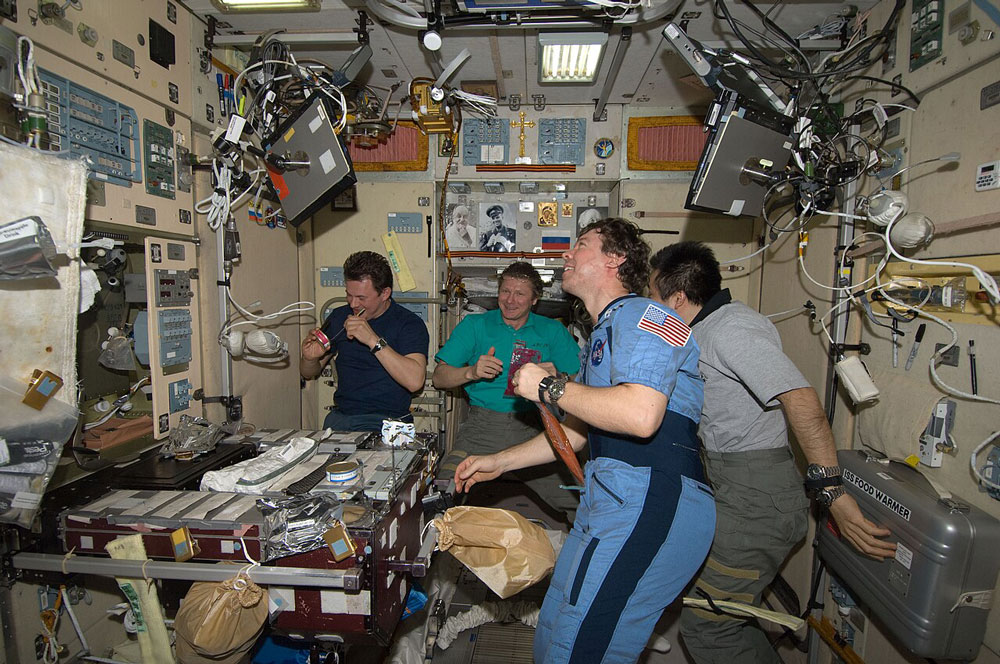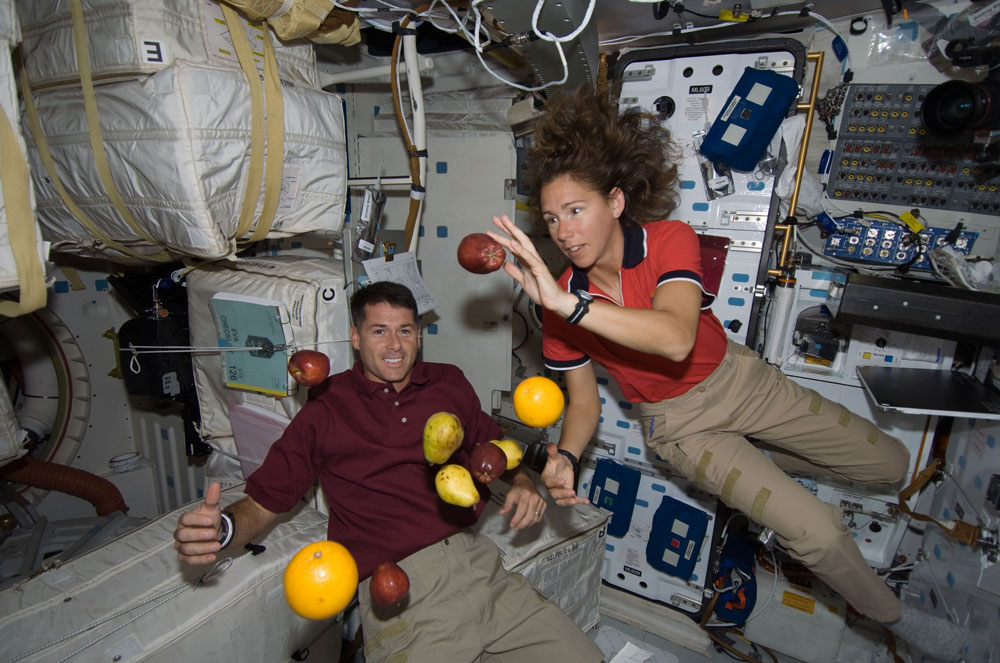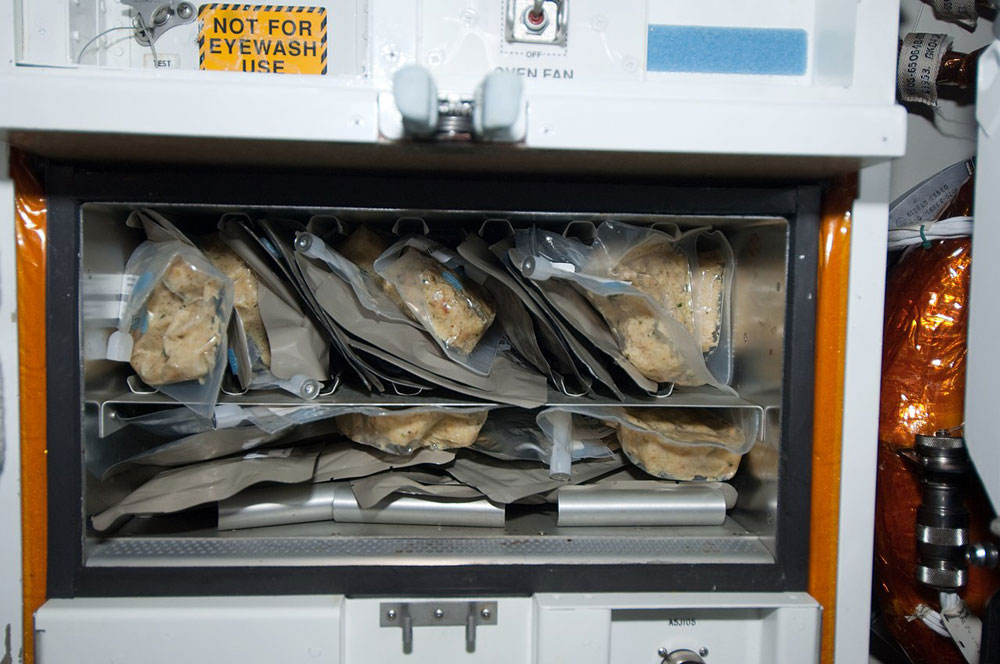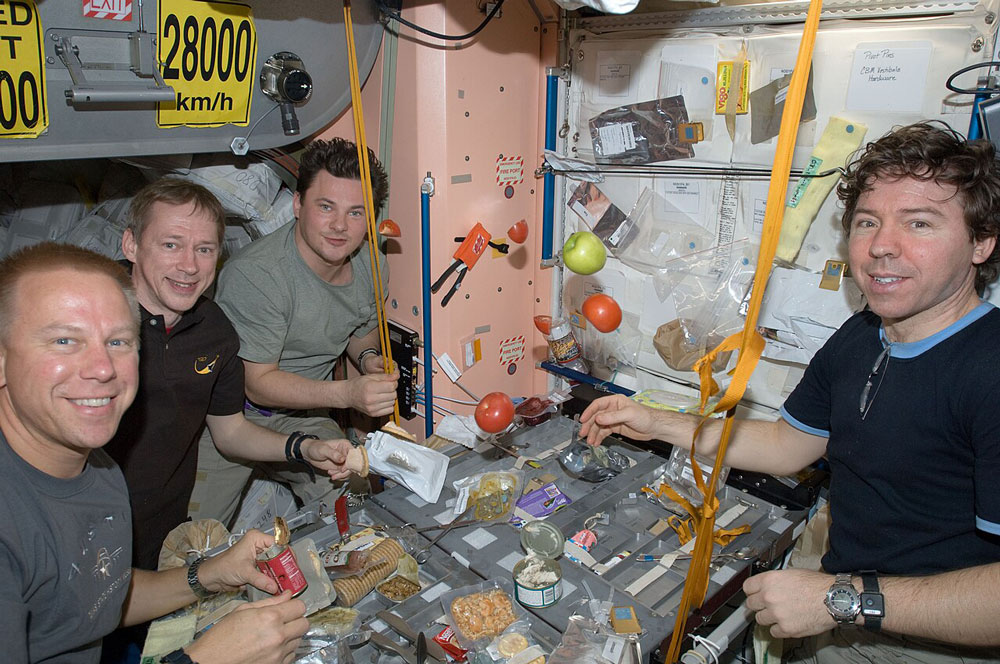
How exactly do you store, prepare and eat meals in a weightless environment, 248 miles above the Earth? With a brilliantly clever kitchen of course…
Ever turned your gaze upwards to watch the International Space Station (ISS) moving across the sky, and wondered how on earth the astronauts can put together a decent meal while floating about like that?
Probably not… But as confirmed kitchen obsessives and lovers of ingenious cooking solutions, at Naked Kitchens that’s just the sort of thing we need to know. And it turns out that even in space the kitchen is very much the heart of the home – even though, unlike most earthbound kitchens, VELCRO® is a key material…

Cooking in space
Food in space has come a long way since the early days of ‘cubes and tubes’ and purees sucked through a straw. Today’s ISS astronauts enjoy individual customised menus, developed and prepared by space food specialists. There’s a fridge for fresh fruit and vegetables, while the ISS Vegetable Production System, known as Veggie, is running trials in growing fresh foods in space, such as lettuce and Chinese cabbage.

A typical day’s menu might include: porridge with berries, cream of mushroom soup, ravioli with green beans and potatoes, fruit cobbler, sweet and sour pork with mixed vegetables, and chocolate pudding.
Crew members can bring a bonus food allowance from home (though nothing that produces crumbs – a potential hazard in a microgravity situation). When British astronaut Tim Peake joined the 2015-2016 Principia mission to the space station, his bonus allowance consisted of seven recipes specially created by chef Heston Blumenthal, including the first bacon sarnie to be eaten in space.

The majority of food items, however, come in the form of a pull-ring tin, a pouch or freeze-dried pack. And this is where the VELCRO® comes in, as pouches and packs are labeled, color coded (for individual crew members), and attached in rows to the sides of the galley storage locker. Tins are attached to magnetic boards.
The main food preparation feature of the galley itself is a water dispenser, with a needle attached to puncture food and drink pouches, and to rehydrate the contents with hot or cold water at the correct temperature. There’s also a food warmer for heating up prepared foods.
The heart of the ‘home’

Here on terra firma, we know just how important our kitchens are, not only as somewhere to cook and eat, but as a social hub. The same is true of space: ISS is an international partnership of 15 countries, in which seven crew members spend six months at a time on board. And if there is one thing astronauts of all nationalities have come to appreciate, it is the importance of eating together round a table, no matter how cramped.
As astronaut Mike Massimino says, “Food is really important in space travel. It’s more than just nutrition…we’re still human... being able to take a little bit of what you’re used to…sharing meals with friends: it’s the psychological benefit you get.”
Even in space, the kitchen really is the heart of the home.

The International Space Station photographed by ESA astronaut, Luca Parmitano, during a spacewalk in 2019. Photo: creative commons.
ISS kitchen inspiration
Ingenious storage solutions
The ISS somehow squeezes into a tiny space enough stores to feed seven crew members for six months. Naked Kitchens’ storage solutions don’t involve VELCRO® but we have got plenty of ingenious ideas, from pull-out shelving, concealed drawers, hidden larders, wine racks narrow enough to fit into a small gap, peg boards for crockery and cooking utensils, and much more. See more ingenious kitchen storage solutions here.
Designing for small spaces
The ISS galley is designed to enable astronauts to eat together at a table, so if you think your kitchen is too small to accommodate an eating area, you may be pleasantly surprised. We’re experts at working with compact spaces: see more in Small but beautiful: A complete guide to designing and maximizing the space in a small kitchen.
Built for life
The ISS galley may not be particularly beautiful, but it is brilliantly designed around its daily use. At Naked Kitchens we know that a kitchen is not a showroom but the place where real life happens, so it should be as practical as it is beautiful, crafted for how you actually use it every day. Browse our portfolio of kitchens built for life here.
See also:
‘Kitchens Fit for Heroes’: The surprising brilliance of Britain’s post-war prefabs
The Frankfurt Kitchen - the kitchen that revolutionized modern design
The Sunderland flying boat galley kitchen - built for a high-pressure life
Ernest Shackleton's Cape Royds kitchen - built for an extreme life





















